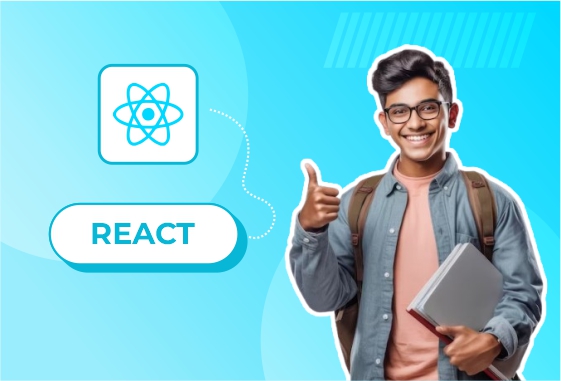
Product Landing Page
A Product Landing Page built using React is a single-page website designed to showcase a product or service. The page typically includes sections like product features, benefits, testimonials, pricing, and a call-to-action (CTA) button that encourages visitors to make a purchase or sign up. The page is fully responsive and interactive, providing a smooth user experience.
Key Features
1.Product Overview
A section introducing the product, highlighting its key features and benefits.
High-quality images or videos to demonstrate how the product works.
2.Responsive Design
The layout adjusts to fit different screen sizes, making the landing page accessible and visually appealing on both desktops and mobile devices.
Uses CSS frameworks like Bootstrap, Material UI, or custom CSS to ensure responsiveness.
3.Interactive Elements
React components to manage dynamic sections (e.g., product features, pricing).
Smooth scrolling between sections for a seamless user experience.
Interactive buttons (e.g., "Buy Now" or "Learn More") that trigger actions like navigating to a purchase page or showing a product modal.
4.Product Features and Pricing
A section that highlights the main features and benefits of the product.
Pricing options displayed with a clear call-to-action (CTA), such as "Buy Now" or "Get Started."
5.Call-to-Action (CTA)
Prominent buttons or forms asking visitors to take action, such as buying the product, subscribing to a newsletter, or signing up for a free trial.
6.Testimonials or Reviews
A section showcasing customer reviews or testimonials to build trust and credibility.
Optionally, display user ratings, quotes, or video testimonials.
7.Contact or Signup Form
A contact or signup form to collect user information or requests for more information.
This can be implemented using controlled components in React for form management.
Technologies Used
- React: The core library for building the landing page, using components to manage the page’s structure and content.
- React Router (optional): If you need multiple pages (e.g., a pricing page, or a "Thank You" page), React Router can be used to navigate between them.
- CSS: For styling the page, or CSS frameworks like Bootstrap or Material UI for quicker styling and responsiveness.
- React Hooks: Use hooks like useState and useEffect to manage state and side effects for interactive features (e.g., form validation, smooth scrolling).
- API Integration (optional): If you need to handle data, such as collecting form submissions or retrieving product details from an API.
How It Works
- Landing Page Structure: The page is split into different sections: a hero section (with product introduction), features, testimonials, pricing, and contact/signup.
- React Components: Each section of the page (hero, features, pricing, etc.) is built as a separate React component for reusability and maintainability.
- Smooth Scrolling: React and CSS are used to enable smooth scrolling between sections when a user clicks on a navigation link.
- Responsive Layout: The layout adjusts automatically to different screen sizes (desktop, tablet, mobile) to ensure a smooth user experience.
- Interactive Call-to-Actions: Buttons or forms that prompt users to take action, such as buying the product or signing up for more information.
Why It’s Useful
- Marketing Tool: A Product Landing Page is an effective marketing tool to showcase a product and convert visitors into customers or subscribers.
- React Practice: This project gives you hands-on experience with React components, state management, and event handling.
- SEO Optimization: Even though it's a single-page app, you can use SEO best practices to make the page discoverable and improve visibility on search engines.
Possible Add-ons
- User Authentication: Add login/signup functionality if the landing page is part of a larger app or product suite.
- Email Capture: Include an email signup form to collect leads or subscribers (using React Hooks and form validation).
- Product Demo: Add a video or interactive demo of the product.
- Analytics Integration: Track user interactions on the page (e.g., button clicks, form submissions) using tools like Google Analytics.
- Animations: Add animations to various sections (e.g., fade-in effects on scrolling, hover effects on buttons) using libraries like Framer Motion or React Spring.
- Multi-language Support: Support multiple languages for an international audience, using libraries like React-i18next.





